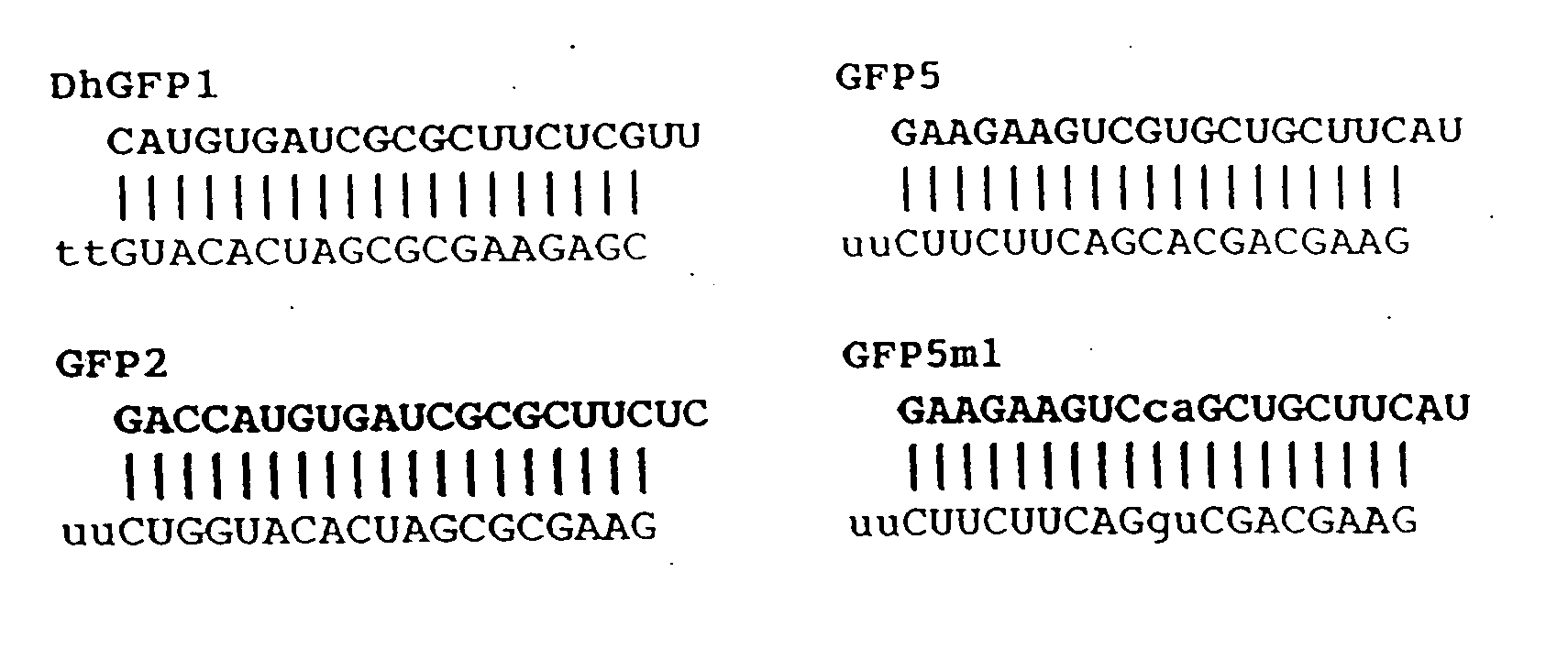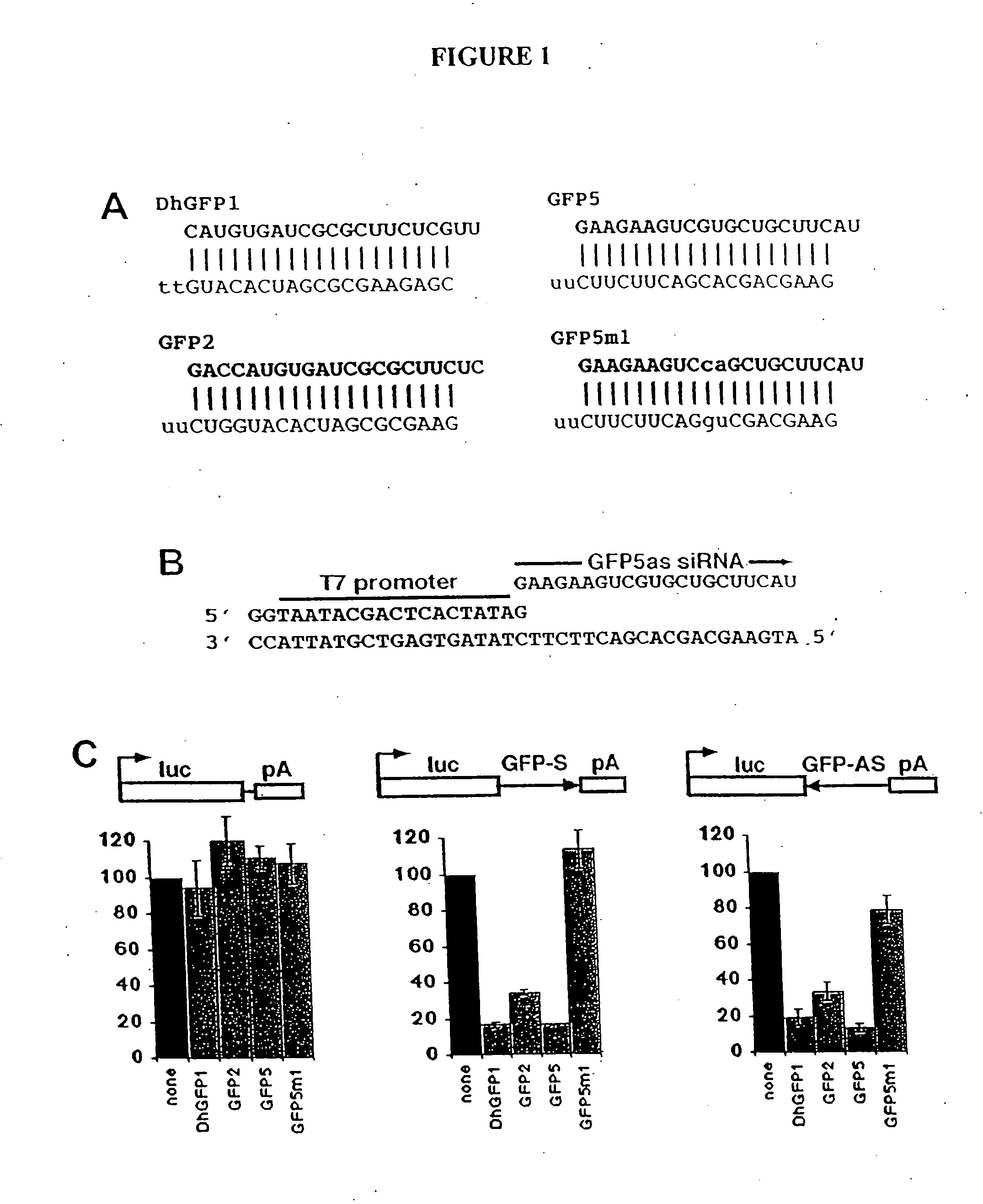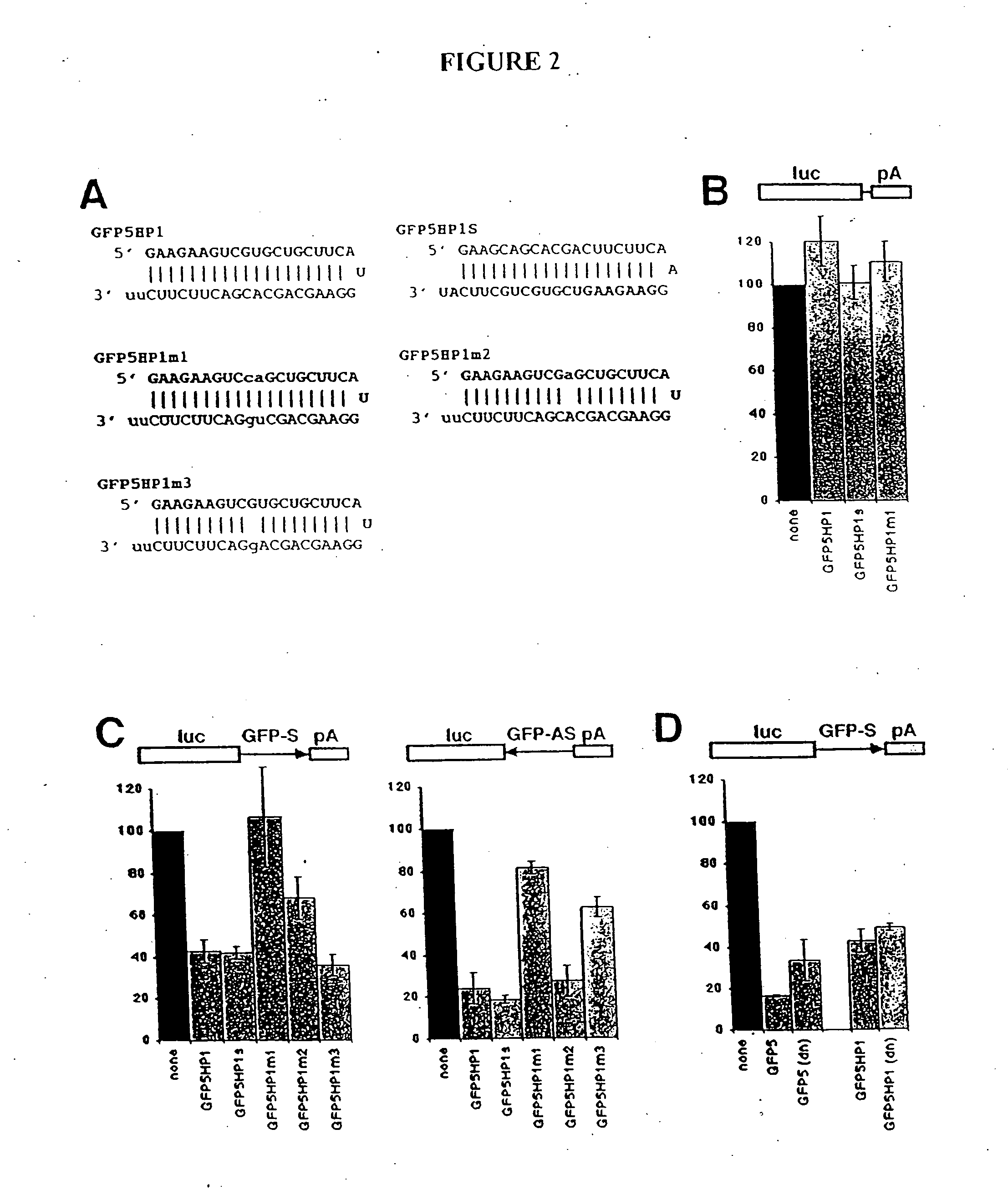MicroRNA vectors
a microrna and vector technology, applied in the field of gene silencing, can solve the problems of inability to achieve the effect the method of delivery of sirna, and the inability to induce cells to take up exogenous nucleic acids, etc., and achieve the effect of inhibiting the function of a target rna molecul
- Summary
- Abstract
- Description
- Claims
- Application Information
AI Technical Summary
Benefits of technology
Problems solved by technology
Method used
Image
Examples
example 1
Materials and Methods
siRNA Synthesis
[0298] For in vitro transcription, 40-nt DNA template oligonucleotides were designed to produce 21-nt siRNAs. siRNA sequences of the form GN17CN2 were selected for each target, since efficient T7 RNA polymerase initiation requires the first nt of each RNA to be G (Milligan, J. F. et al. (1987) Nucleic Acids Res 15, 8783-98). The last two nt form the 3′ overhang of the siRNA duplex and were changed to U for the sense strand (Elbashir, S. M. et al. (2001) Nature 411, 494-8) (see FIGS. 1A and 1B and FIG. 5 for sequences). For hairpin siRNAs, only the first nt needs to be G (FIG. 2A). Each template and a 20-nt T7 promoter oligonucleotide (FIG. 1B) were mixed in equimolar amounts, heated for 5 min at 95° C., then gradually cooled to room temperature in annealing buffer (10 mM Tris-HCl and 100 mM NaCl). In vitro transcription was carried out using the AmpliScribe T7 High Yield Transcription Kit (Epicentre, Madison, Wis.) with 50 ng of oligonucleotide...
example 2
Inhibition of Reporter Gene Expression by ds siRNAs Synthesized by In Vitro Transcription
[0303] To test the ability of RNAs generated by in vitro transcription to function as siRNAs, complementary pairs of 21-nt RNAs were synthesized with T7 RNA polymerase and partially single-stranded DNA oligonucleotide templates (FIGS. 1A and 1B) (Milligan, J. F. et al. (1987) Nucleic Acids Res 15, 8783-98). Each pair of 21-nt siRNA strands was synthesized separately and annealed to create a 19-nt siRNA duplex (ds siRNA), with two nt 3′ overhangs at each end as previously described (see Example 1, Materials and Methods, for details of synthesis, purification, and quantitation).
[0304] As a rapid assay for siRNA function, the ability of either T7 or chemically synthesized siRNA duplexes to inhibit the expression of Green Fluorescent Protein (GFP) in a transient transfection was tested. siRNAs and an expression vector for GFP were cotransfected into mouse P19 cells, and GFP expression was assessed...
example 3
Inhibition of Reporter Gene Expression by Hairpin siRNAs Synthesized by In Vitro Transcription
[0307] The next step was to determine whether a short hairpin RNA could function like a siRNA duplex composed of two siRNA strands. The T7 in vitro transcription was used to synthesize variants of the GFP5 siRNAs in which the two siRNA strands were contained within a single hairpin RNA (hp siRNA), with the sequence for each strand connected by a loop of three nucleotides (FIG. 2A). In GFP5HP1, the GFP5 antisense siRNA (corresponding to the antisense strand of GFP) is located at the 5′ end of the hairpin RNA, while in GFP5HP1S, the GFP5 sense siRNA is at the 5′ end of the hairpin RNA. The loop sequence for each vector is a continuation of the 5′ end siRNA in the hairpin. Each hairpin RNA ended with two unpaired U residues that did not match the target strand. As a control for sequence specificity, the GFP5HP1m1 hairpin RNA was also synthesized; GFP5HP1m1 has a two base mismatch with GFP (an...
PUM
| Property | Measurement | Unit |
|---|---|---|
| temperature | aaaaa | aaaaa |
| composition | aaaaa | aaaaa |
| Disorders | aaaaa | aaaaa |
Abstract
Description
Claims
Application Information
 Login to View More
Login to View More - R&D
- Intellectual Property
- Life Sciences
- Materials
- Tech Scout
- Unparalleled Data Quality
- Higher Quality Content
- 60% Fewer Hallucinations
Browse by: Latest US Patents, China's latest patents, Technical Efficacy Thesaurus, Application Domain, Technology Topic, Popular Technical Reports.
© 2025 PatSnap. All rights reserved.Legal|Privacy policy|Modern Slavery Act Transparency Statement|Sitemap|About US| Contact US: help@patsnap.com



